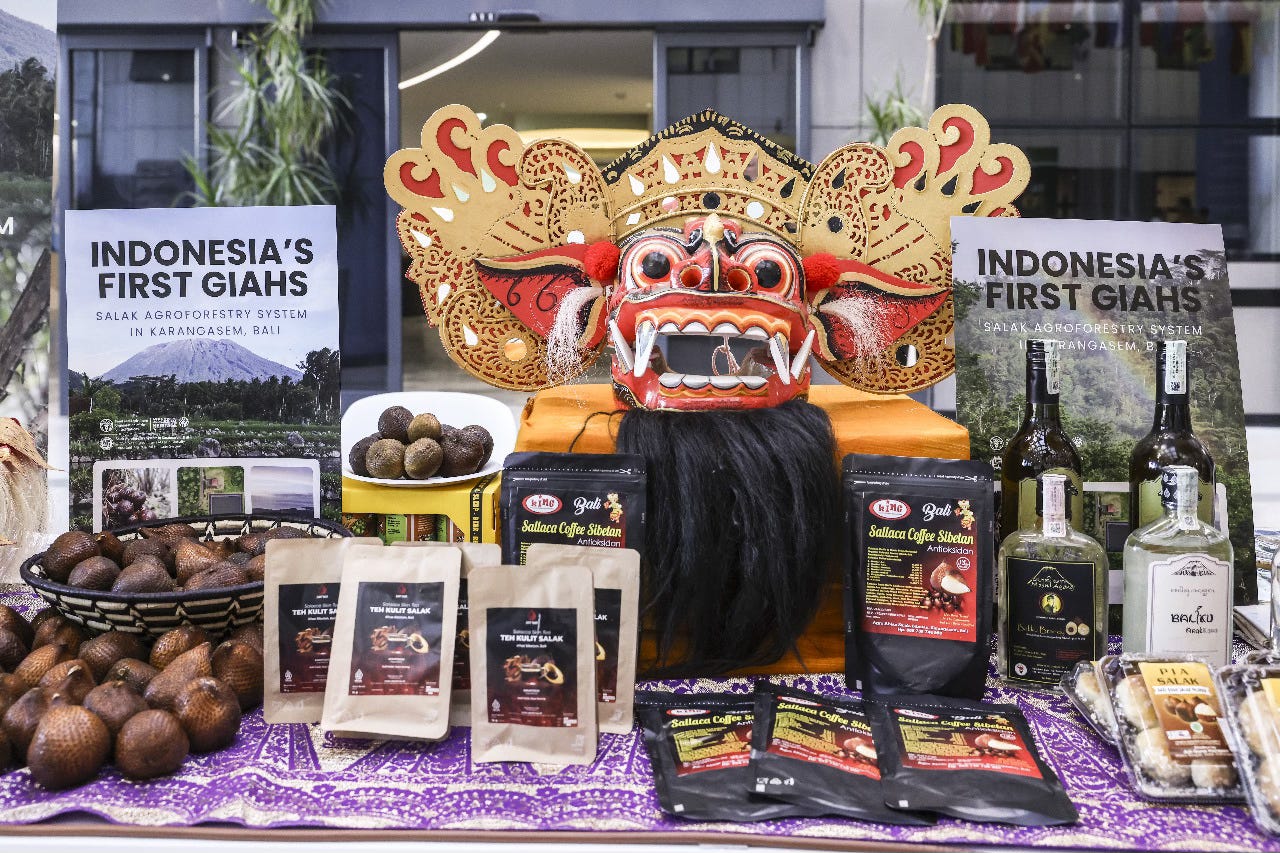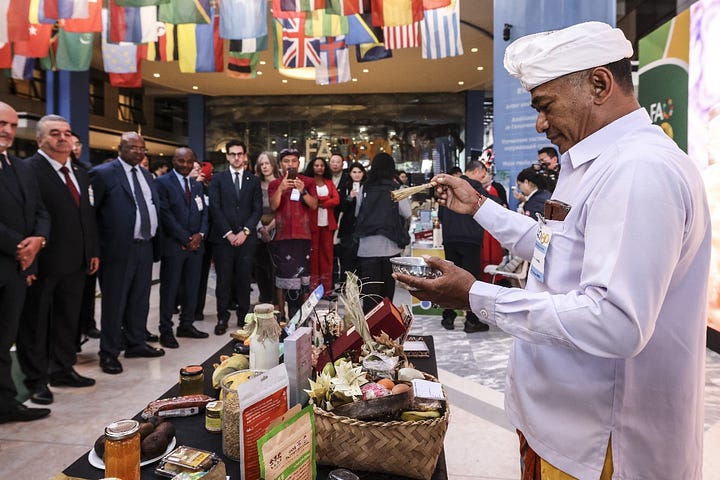Bali’s salak agroforestry named Indonesia’s first FAO GIAHS site
A milestone for Indonesia and Southeast Asia’s farming heritage 🌾🌏

🪶 The Main Takeaway
FAO has officially awarded Indonesia its first-ever GIAHS (Globally Important Agricultural Heritage Systems)recognition for the Salak Agroforestry System of Karangasem, Bali.
The certification — presented at the 2025 GIAHS Award Ceremony in Rome — places Indonesia among 14 countries receiving new global heritage designations this year.
The system, home to 12 local salak varieties and governed by awig-awig (customary regulations), represents a rare blend of traditional ecological knowledge, community-driven land governance, and resilient agroforestry practices.
“This is a historic milestone for Indonesia,” said Muhammad Taufiq Ratule, representing the Ministry of Agriculture. “The Salak Karangasem system reflects generations of ecological wisdom, community leadership, and sustainable food production.”

🌏 Why It’s on Our Radar
Indonesia’s new GIAHS status strengthens Southeast Asia’s profile within FAO’s global heritage network — a region where traditional food systems face rising pressures from land conversion, climate change, and declining youth interest in farming.
Karangasem, Bali’s largest salak production center, involves 2,800 farmers managing a biodiverse agroforestry system that integrates fruit trees, shade crops, and forest species within one of Bali’s driest landscapes.
“Supporting systems like Karangasem’s salak agroforestry is essential for resilience and cultural continuity,”said I Ketut Sedana Merta, Secretary of Karangasem Regency.
💡 What’s at Stake
🌱 Safeguarding a zero-waste crop system where every part of the salak plant is utilized.
🧬 Preserving high-agrobiodiversity farming rooted in Bali’s philosophies Tri Hita Karana and Tri Mandala.
🔥 Strengthening climate adaptation in a region vulnerable to drought and land-use change.
👥 Ensuring intergenerational continuity, as local leaders raise concerns over declining youth participation.
🌍 Positioning Indonesia within global knowledge exchange on heritage agriculture and sustainable food systems.
FAO highlighted GIAHS sites as living examples of climate-resilient, culturally grounded, community-led agriculture— a model increasingly relevant to ASEAN’s food security agenda.
📸 The Big Picture
🌎 Part of FAO’s global network of 102 agricultural heritage systems.
🌿 GIAHS recognizes landscapes that combine biodiversity, cultural traditions, adaptive knowledge, and sustainable food production.
🤝 Bali’s salak agroforestry system is maintained through community governance, customary land protection, and multi-strata agroforestry design.
“With proper support, GIAHS sites can evolve into powerful climate adaptation models,” said Rajendra Aryal, FAO Representative in Indonesia and Timor Leste.
🌐 The Regional Stakes
Southeast Asia hosts multiple traditional farming systems — from rice terraces to integrated agroforestry — yet many face threats from land conversion and climate stress.
Indonesia’s first GIAHS recognition signals:
stronger regional representation within global heritage agriculture,
new opportunities for South–South knowledge exchange, and
renewed momentum for ASEAN agricultural heritage nominations.
Salak grows across Southeast Asia, but production data outside Indonesia is limited. In Thailand, the industry is still in its infancy. Malaysia exported about 28.61 million kg (≈28,610 tons) in 2023, up nearly 46%. Indonesia remains far ahead in volume, yet neighboring countries are pushing exports and processing—setting the stage for tighter regional competition.
🏠 Why This Hits Home
For Indonesia, the recognition elevates local food systems as strategic assets — culturally, economically, and environmentally.
For Southeast Asia, it reinforces the role of agroecology and heritage-based farming as pathways toward resilient, diversified, and culturally rooted food systems.


✨ Beyond the Headlines
🌳 Indonesia’s first GIAHS site boosts Southeast Asia’s visibility in FAO’s global heritage network.
🌏 Recognition underscores the region’s traditional food systems as anchors of climate resilience and cultural continuity.
(VRG/VBD)




